Unity中Temporal AA
这个东西是trace在群里提到的,然后我看了一些相关资源Filtering Approaches for
Real-Time Anti-Aliasing(很多sig course好棒好棒)、High Quality Temporal Supersampling、CryENGINE3 Graphics Gems。在这么多资料(其实是现成代码…)的帮助下,我主要参考CryEngine里的SMAA 1TX山寨了下,UE4的那个有点过于麻烦了。
备忘
- Unity中矩阵是左乘的,和UE4里相反,所以在对projectionMatrix做jitter的时候要反下
UNITY_MATRIX_MVP在之前的post里已提过,这个是卡我最久的地方(╯‵□′)╯︵┻━┻- Depth Buffer也在同一个post里提了,这是卡我第二久的地方……
OnRenderImage里如果不手动设置RenderTexture.active的话,最好要保证最后对dest调用下Graphics.Blit,不然之后画的就乱七八糟了
其实都是一些API上的东西,搞的我连蒙带猜的…
效果
自我感觉效果还行吧…一开始边缘一直有闪动,慢慢改对代码之后降低了不少,最后就调参数了只能…
Temporal AA:
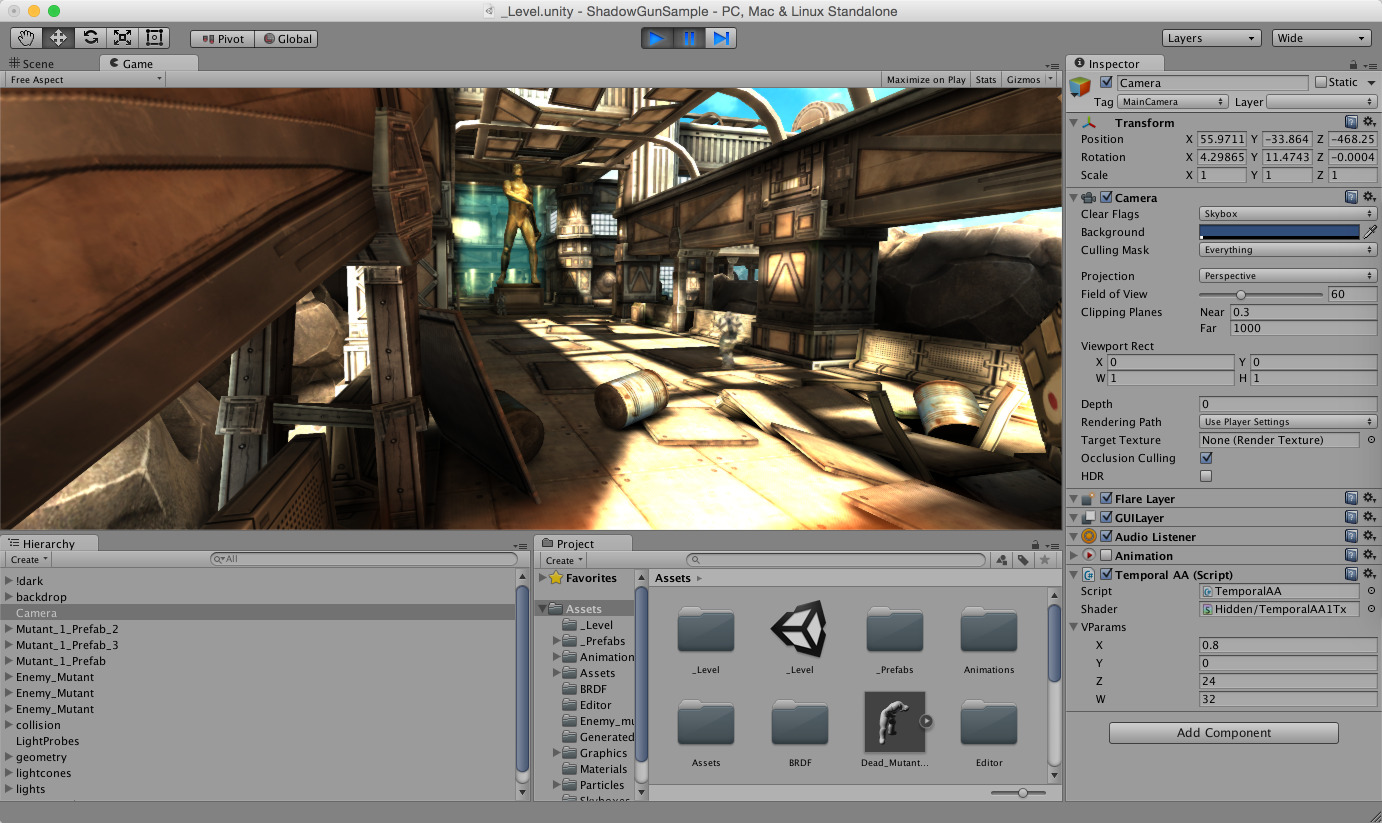
W/O AA:
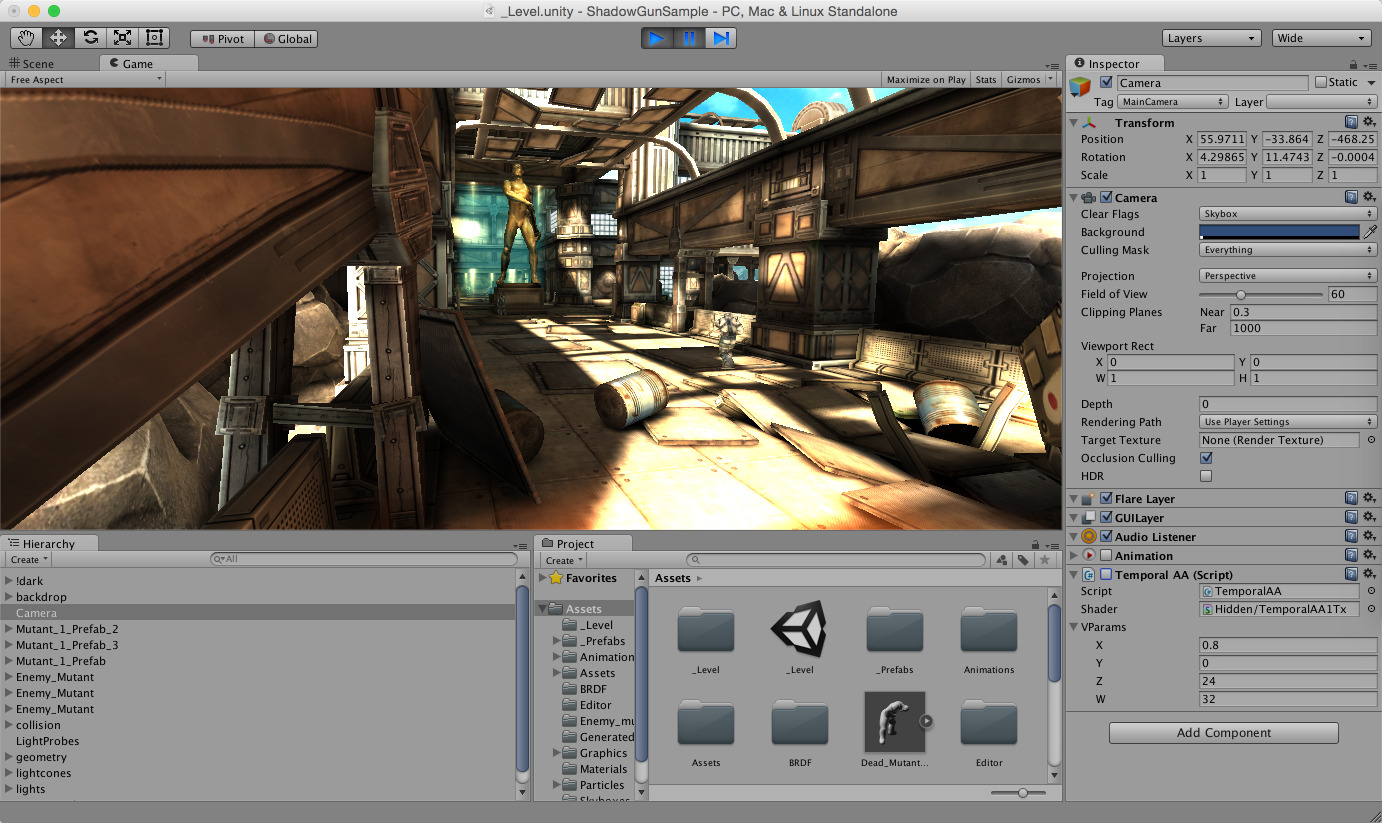
Nexus5真机
| Temporal AA | W/O AA |
|---|---|
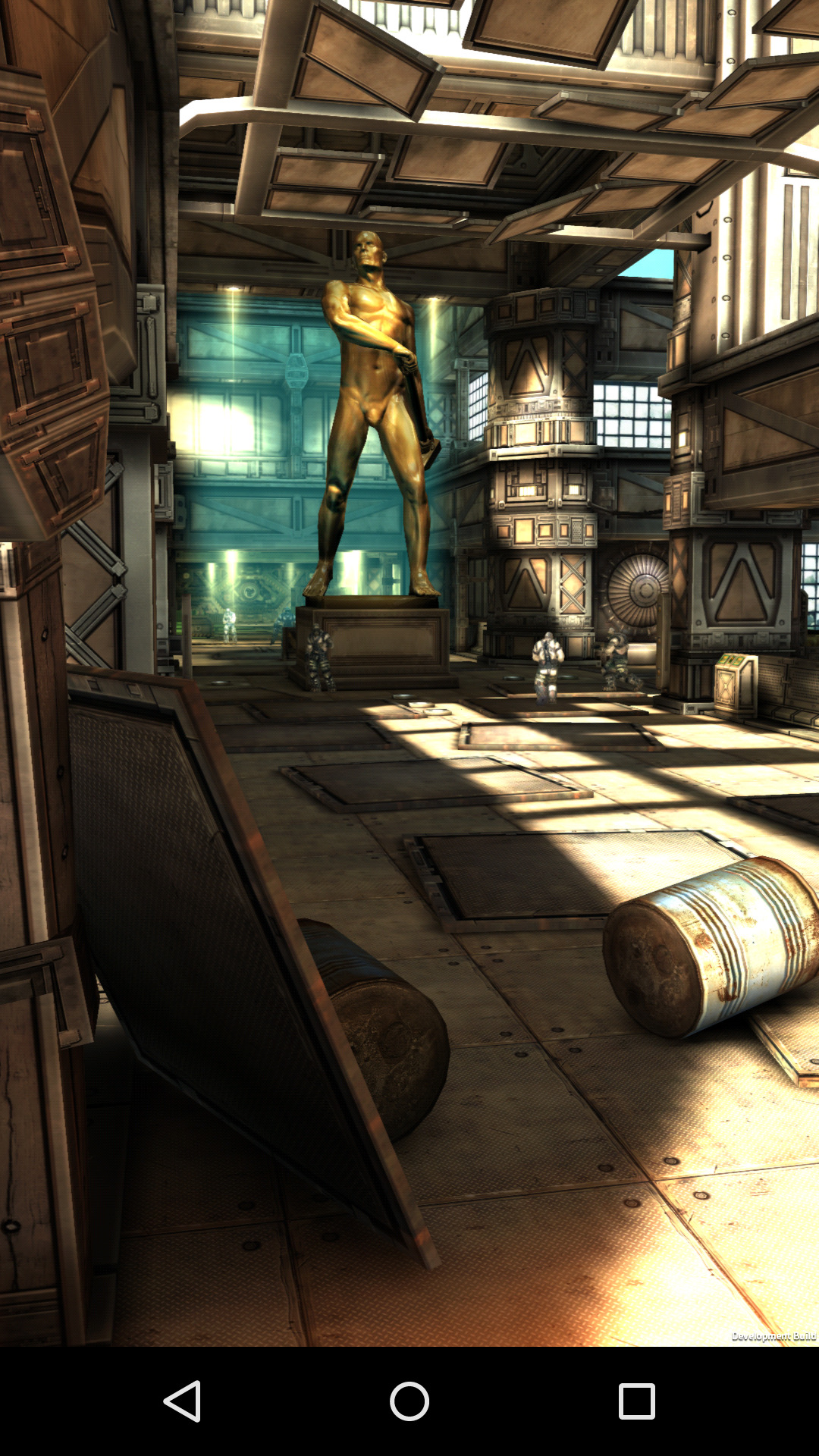 |
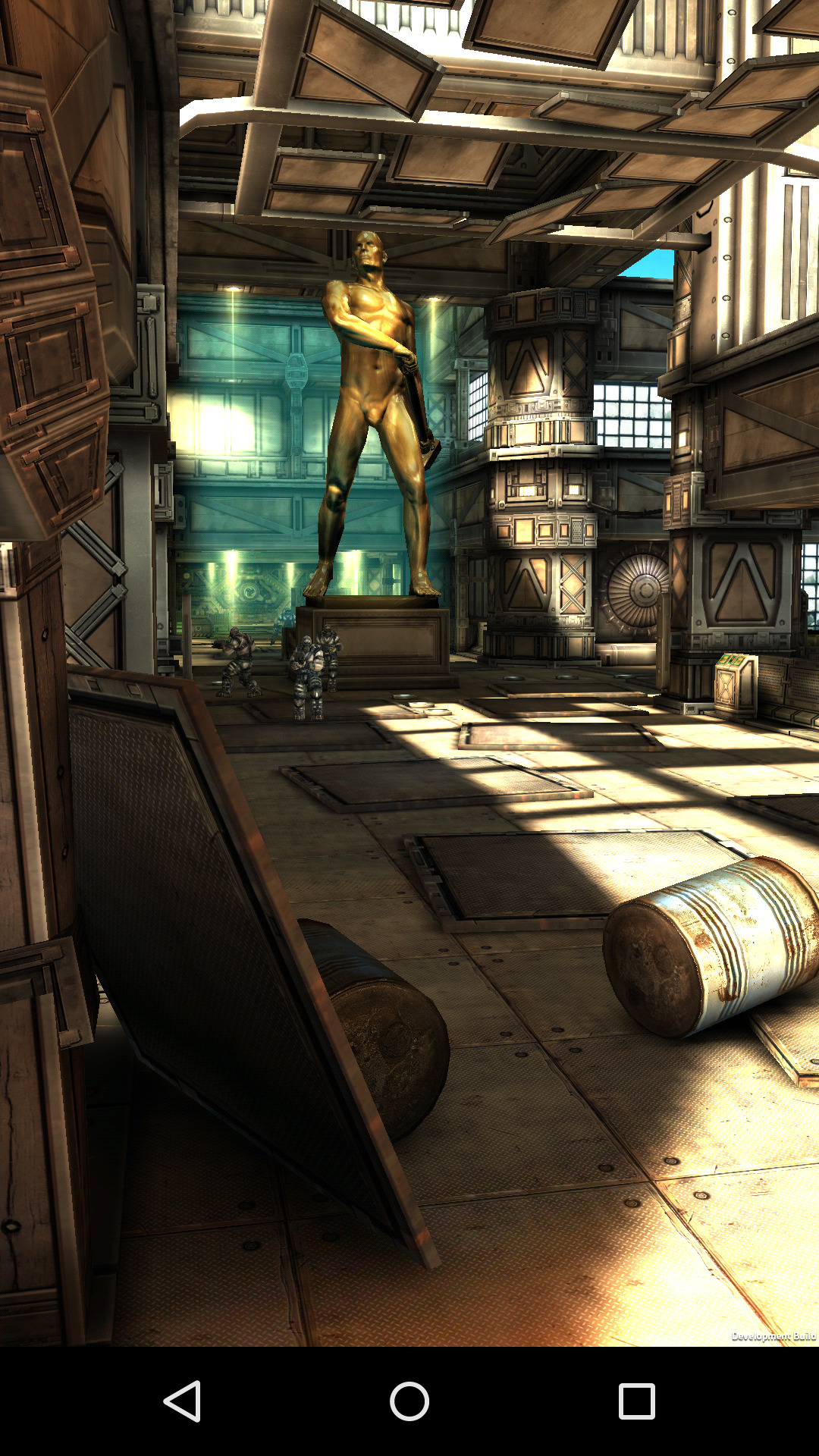 |
放大出来还是能看出来的
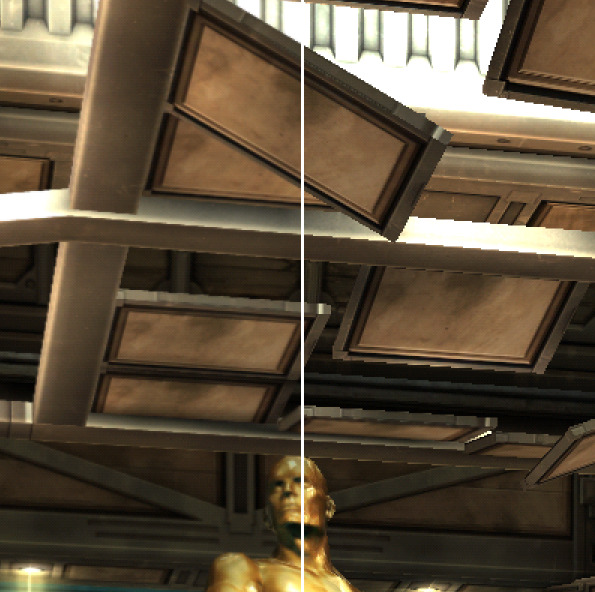
性能
在Nexus 5上跑了下Shadow Gun Sample Level这个场景,每帧消耗时间大概增加了7ms;从profiler上来看主要是因为用到了Depth Texture,而且看起来不是直接用的ZBuffer导致的(见Unity中矩阵变换、深度纹理及杂项),话说还是Defer大法好-_,-
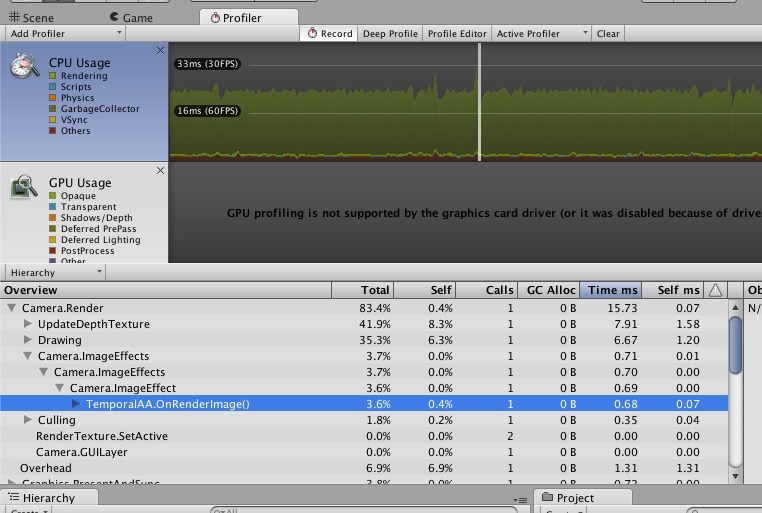
NVidia在Far Cry 4 Graphics, Performance & Tweaking Guide中有不同AA效果对比;TweakGuides的Crysis 3 Tweak Guide中有一节专门讲Antialiasing,里面有性能图标。后来问了下老大,她意思就是AA还是比较费的,等有性能余地的话才加;而且比较尴尬的是手机屏幕上其实看不太出区别,看来还是要配合动态分辨率+upscale~